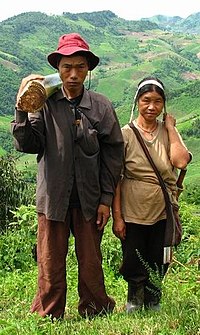
Photo from wikipedia
The configuration of ecological land directly affects the structure and function of an ecosystem and, ultimately, its ability to meet human needs. From the perspective of human needs, this paper… Click to show full abstract
The configuration of ecological land directly affects the structure and function of an ecosystem and, ultimately, its ability to meet human needs. From the perspective of human needs, this paper classified human needs into material needs, security needs and spiritual needs. Using Hechi City, Guangxi as the study area, we combined the Multi-objective planning (MOP) and PLUS models to study the quantity and spatial optimization of ecological land under different human needs scenarios, and the optimal allocation of ecological land within the ecological red line was also discussed. We conclude that: (1) Hechi City currently has less arable land, which cannot fully guarantee the material needs of human beings; there is more forest land than the amount needed to meet human needs, which reduces the efficiency of ecological land use. (2) In terms of quantity optimization, and considering the goals of different human needs, the area of grass to forest should be extended to satisfy security needs; the area of arable land should be significantly increased in line with material needs; the area of grass and water, with the goal of accommodating spiritual needs, is the largest compared with the rest of the goals. Under the comprehensive needs goal, the forest land area is greatly reduced, and the rest of the land area is increased; the goals of human material, spiritual and security needs are basically met. (3) In terms of spatial layout optimization, in order to meet the security needs target, grass to forest conversion should be carried out in the northern area to enhance the aggregation of forest land; to meet the material needs target, the southwestern gentle slope area should be concentrated toward continuous farming to guarantee the aggregation of arable land while increasing the area of arable land; to meet the spiritual needs target, the area of water in the northwestern area should be increased, and the rest of the changes are similar to the security needs target; to meet the comprehensive needs target, the overall land use connectivity becomes stronger, the fragmented land types become less and the concentrated continuous area of forest land, arable land and grass increases. (4) The results of the ecological land adjustment within the ecological red line indicate that the current ecological red line delineation is good, and a small amount of adjustment can meet human needs. Based on human demand, combined with the MOP-PLUS model for ecological land optimization, it can accurately portray the spatial and temporal evolution pattern of land use and reveal the optimization path of ecological land, which has important theoretical and practical values.
Journal Title: International Journal of Environmental Research and Public Health
Year Published: 2022
Link to full text (if available)
Share on Social Media: Sign Up to like & get
recommendations!